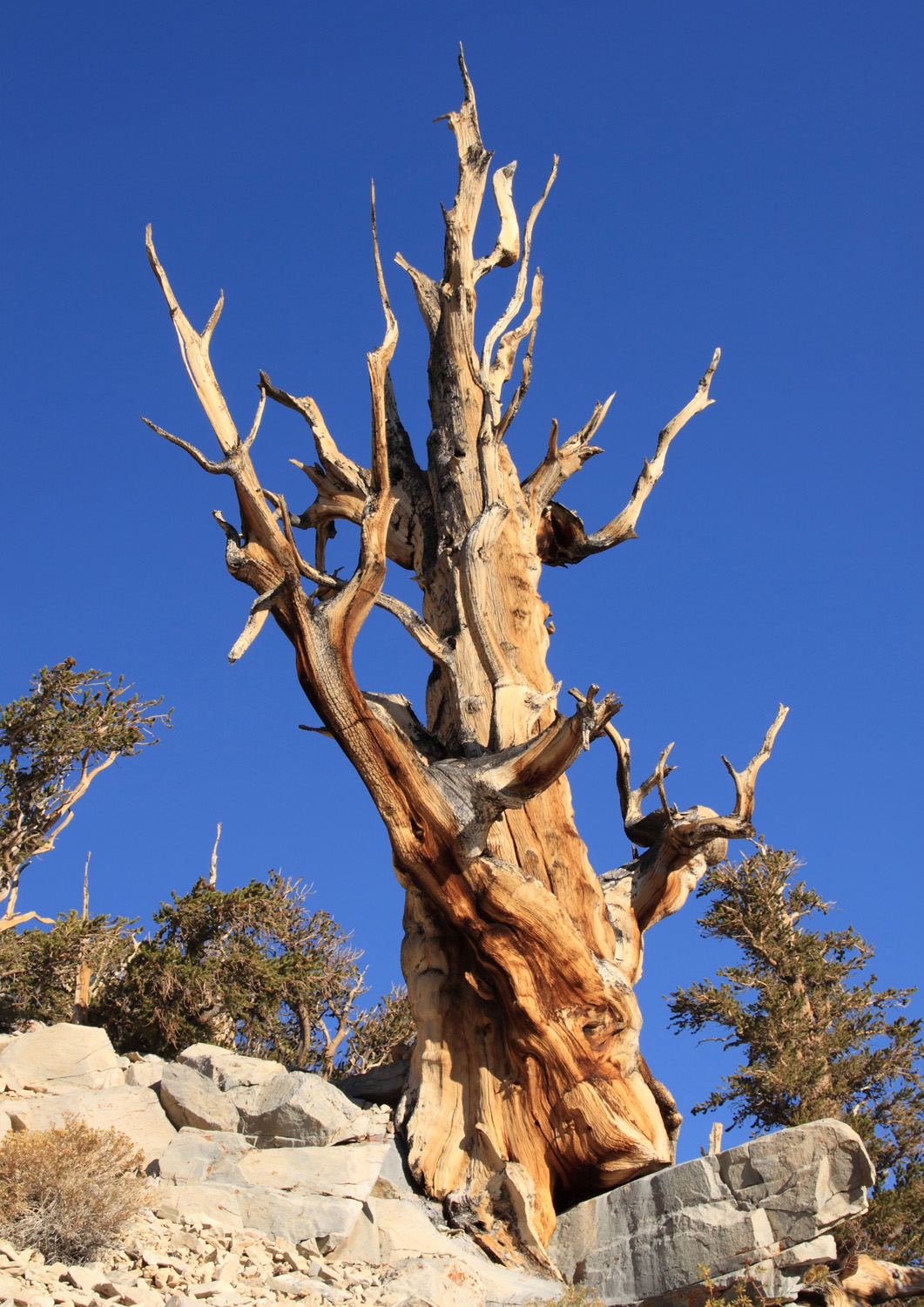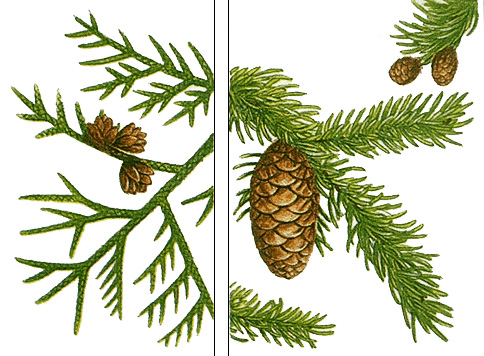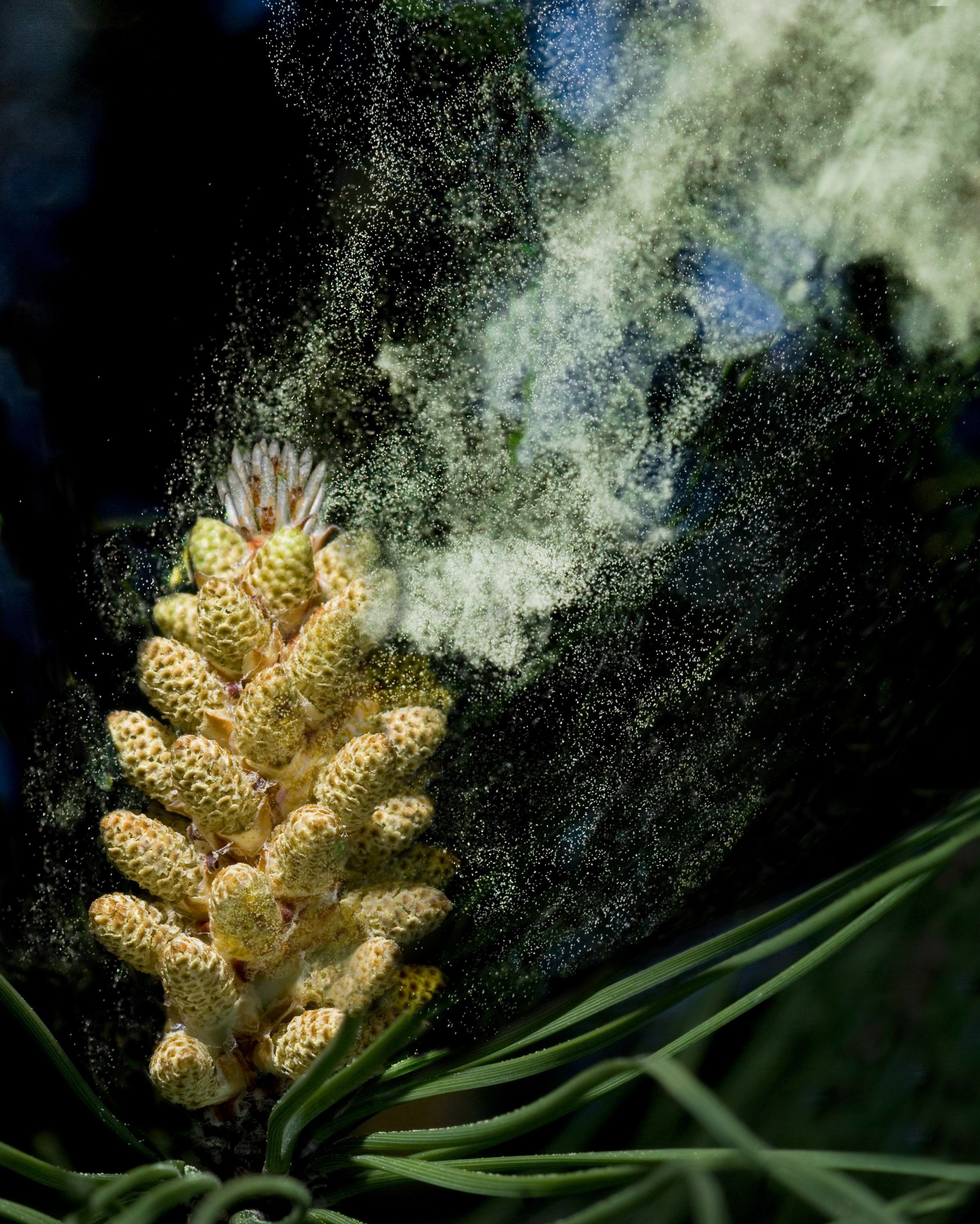Conifer << KOH nuh fuhr or KON uh fuhr >> is any one of a large group of trees or shrubs that bears its seeds in cones. Most conifers have tall, straight trunks and narrow branches and grow in cold or cool climates. Common conifers include cedars, cypresses, firs, hemlocks, junipers, larches, pines, redwoods, sequoias, and yews. The cycad plant also bears cones, but it is not considered to be a conifer (see Cycad).

Conifers are one of the oldest groups of woody plants. Conifer fossils have been found in rocks that are about 300 million years old. Conifers include the largest, tallest, and oldest living things. The largest giant sequoia is about 275 feet (83.8 meters) high, and the base of its trunk has a circumference of 103 feet (31.4 meters). Redwoods, the tallest living trees, may tower more than 360 feet (110 meters) high. Some bristlecone pines are more than 4,600 years old.
Conifers form about 30 per cent of the world’s forests. In North America, most of the wood used in houses and other buildings comes from conifers, especially Douglas-fir and loblolly pine. Conifers also provide much wood pulp for making paper and cardboard. In addition, millions of conifers are used every year as Christmas trees.
Most conifers are evergreen and have small, needlelike leaves. Other conifers, including redcedars and cypresses, have tiny, scalelike leaves that cling to the stem. These trees are also evergreen. Larches and baldcypresses are conifers but they lose their leaves every year.

Conifer cones range from less than 1/2 inch (1.3 centimeters) long to more than 2 feet (61 centimeters) long. Conifers have two types of cones–male and female. In most conifers, both types grow on the same plant. The soft male cones produce and release pollen, then shrivel and die. The female cones are larger and become woody with age. Each of their scales has two structures called ovules, which contain eggs (female reproductive cells). Wind carries pollen from the male cones to the female cones, where the pollen fertilizes the egg. The ovules then develop into seeds. After the seeds become fully formed, they fall from the cones.

A few conifers have unusual, fleshy cones. Juniper seed cones resemble blueberries. Yew seed cones look like red berries with a single, large seed.
